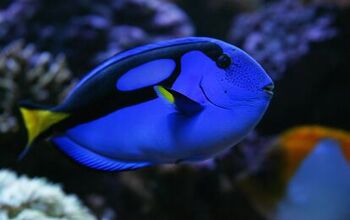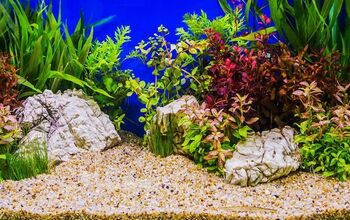The Pros and Cons of CO2 in an Aquarium

Serious hobbyists who delve into the world of planted tanks often consider adding a CO2 set up to their tanks. Remember back in science class, when you learned about photosynthesis? Plants absorb light and carbon dioxide, emit oxygen, and grow. Plants will grow to be greener, fuller, and lusher when you use CO2 in your tank, but there are also some cons you should keep in mind.
A pressurized carbon dioxide set up consists of a CO2 tank, a line that runs into the tank, and a diffuser at the end to break down the bubbles and disperse them into the water column. Additionally, a tank with pressurized CO2 should also have a drop checker. A drop checker is a small receptacle that is filled with a fluid called 4dkh, and it will change color based on the pH of the water.
CO2 will drastically drop the pH level of the water, and so extreme care must be used. Along with monitoring the color of the water in the drop checker, it’s equally important to watch your fish for signs of trouble. The more CO2 that’s in the water, the less oxygen will be available in the fish tank. An overdose of CO2 occurs when there’s more carbon dioxide in the water than the plants are capable of absorbing, and oxygen begins to deplete. Fish will start to gasp at the surface, and if left go too long, they will die.
Related: The Dish on Discus
To avoid issues like this, a proper cycle must be maintained. Just like the sun rises and sets each day, the tank lights must be turned off and on, on a schedule. The CO2 should be turned off when the lights go out (some hobbyists also choose to turn on a bubbler/air stone during this time to oxygenate the water).
Once CO2 has been added to the tank, it’s also important to balance the needs of the plants. Since the CO2 will trigger plants to grow at a faster rate, the level of lighting must be sufficient, and there must be enough nutrients in the water for the plants to be fertilized. If any one area is lacking, the plants will begin to melt, show holes, become discolored, and eventually die off.
Related: 6 Popular Aquarium Fish You Need To Avoid
Most commonly, aquarists choose to add dry fertilizers to their tank, rather than the liquid variety. This is simply because it’s more cost efficient, and makes more sense, especially in larger aquariums. Most dry fertilizers on the market will tell you how much of each nutrient should be given. Typically, you will want to dose both micro and macro fertilizers including iron, potassium nitrate, potassium phosphate, and potassium sulfate. These elements will ensure that you get the best growth, health, and color out of your plants.
Making the decision to add CO2 to your planted aquarium can be confusing at first, and while there are risks involved, it’s a relatively safe option that will allow you to make your planted tank come to life. Be sure that extra care be taken to ensure that the correct amount of CO2 is dispensed into the tank, and proper oxygenation is achieved during the night hours. Once you’re on a proper schedule and you’ve covered all the points covered here, there’s no reason why your tank can’t flourish.
Summer Davis is the mom of three kids, four dogs, and several tanks of fish. She boasts a passion for all animals, whether they are in the water or on land. This fish aficionado has kept many different species in her time, but holds a special place in her heart for wild and domestic bettas. When she’s not talking about fish, Summer “spins” her extra time as the director of a baton twirling organization.

Summer Davis is the mom of three kids, four dogs, and several tanks of fish. She boasts a passion for all animals, whether they are in the water or on land. This fish aficionado has kept many different species in her time, but holds a special place in her heart for wild and domestic bettas. When she's not talking about fish, Summer "spins" her extra time as the director of a baton twirling organization."
More by Summer Davis
























